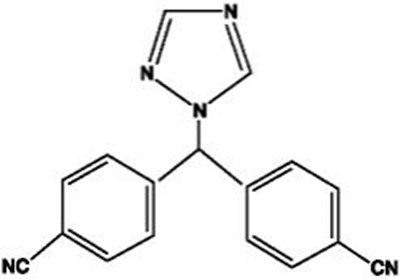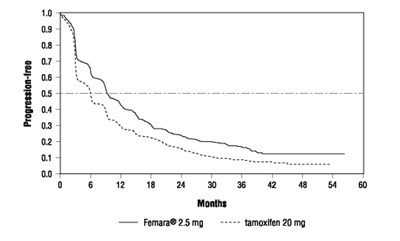Product Images Femara
View Photos of Packaging, Labels & Appearance
Product Label Images
The following 7 images provide visual information about the product associated with Femara NDC 0078-0249 by Novartis Pharmaceuticals Corporation, such as packaging, labeling, and the appearance of the drug itself. This resource could be helpful for medical professionals, pharmacists, and patients seeking to verify medication information and ensure they have the correct product.
Figure 1: Disease-Free Survival (Median follow-up 73 months, ITT Approach) - femara 02

This is a chart or table displaying the results of a study comparing the use of Letrozole and Tamoxifen treatments in a group of 2463 and 2459 patients respectively. The table displays the number of events observed, the percentage of patients affected, and the percentage of patients censored for each group over a period of 72 months. The table also includes a graph displaying the number of patients at risk over the duration of the study for each group.*
Femara Fig 5 - femara 06

This is a table showing the time to progression (in days) for two different doses of a medication called Femara® and an "AG" treatment. No further information is available.*
PRINCIPAL DISPLAY PANEL – PACKAGE LABEL – 2.5 MG TABLETS - femara 07

This is a prescription medicine produced by the company Novartis, primarily used for the treatment of breast cancer in postmenopausal women. The tablets contain 2.5mg of Letrozole each, and the package comes with 30 tablets. The code on the package is 078-0249-5 and the lot number is 101489957. Some text appears to be missing or unreadable.*
* The product label images have been analyzed using a combination of traditional computing and machine learning techniques. It should be noted that the descriptions provided may not be entirely accurate as they are experimental in nature. Use the information in this page at your own discretion and risk.



